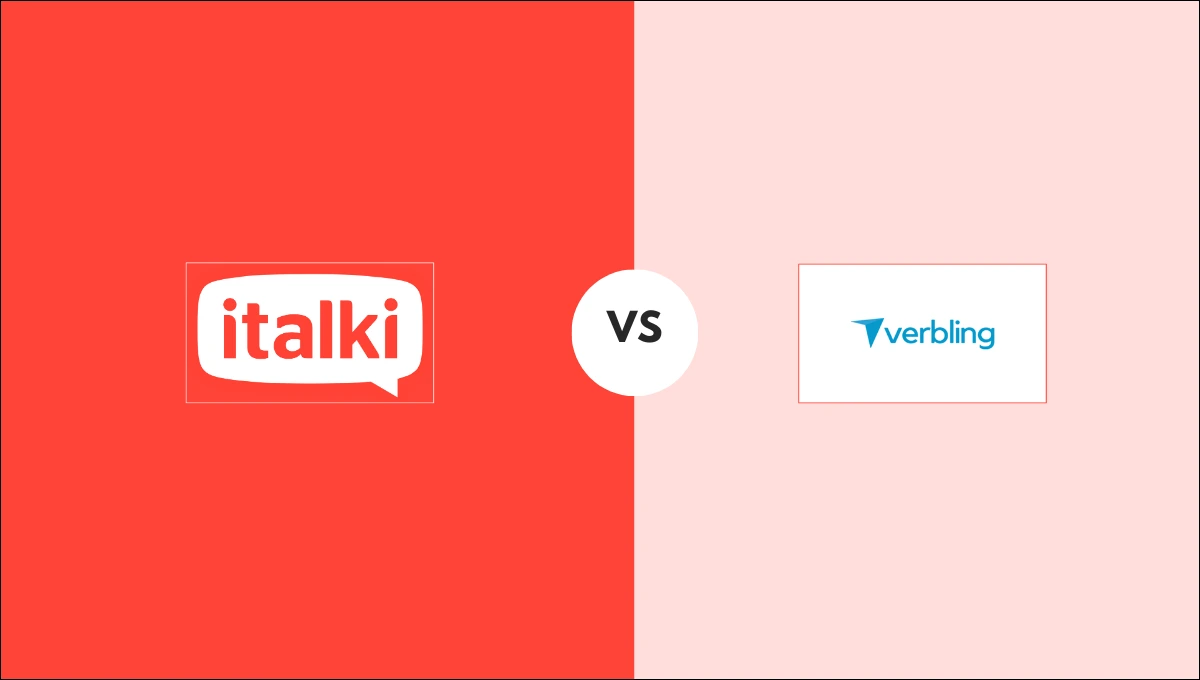Learn the fundamentals of Spanish grammar if you want to be able to communicate in Spanish with native speakers. This entails knowing the proper syntax for phrases, conjugating verbs correctly, and knowing when and how to employ particular pronouns.
While many more complex aspects of the language may require time to understand, being aware of these fundamental guidelines will put you ahead of the game. Let’s examine these fundamental grammatical principles.

5 basic Spanish grammar rules
Remember these fundamental Spanish grammar rules if you want to speak the language more fluently. If you are keen to know how to learn Spanish grammar, this guide is for you so stick around!
Noun Genders
When studying Spanish, one of the first things you’ll notice is that every noun has a gender; they can be either feminine or masculine. This affects the way the noun is written, and depending on the noun’s gender, different articles and adjectives need to be used.
For example, since “table” (la mesa) is a feminine term, it would be referred to with the article “la.” Since “chair” is a masculine word (el silla), “el” would be used instead of “la.”
A noun’s ending is frequently a good indicator of its gender if you’re not sure. For instance, nouns ending in “-o” (el libro, el perro) are normally masculine, but nouns ending in “-a” (la manzana, la camisa) are typically feminine.
Naturally, this rule has occasional exceptions, but being aware of these fundamental grammatical norms will be beneficial most of the time. The best way to learn Spanish is to expose yourself to Spanish grammar content as much as possible. Try to grasp these concepts to become a fluent Spanish speaker and writer.
Subject Pronouns
Different subject pronouns are used in Spanish depending on whether you speak about an individual or a group of individuals. Additionally, certain pronouns have formal (polite) and informal (casual) forms; you must remember this to sound appropriate while speaking to various individuals in various situations.
The Spanish subject pronouns and their English equivalents are as follows:
| Spanish Subject Pronoun | English Equivalent |
| Yo | I |
| Tú | informal you |
| Él/Ella | he/she |
| Nosotros/Nosotras | we (note that this changes depending on whether you’re referring to a group of all males, all females, or a mix of both) |
| Vosotros/Vosotras | informal plural you (again, this changes based on the gender of the group) |
| Ellos/Ellas | they |
| Usted | formal you |
| Ustedes | formal plural you |
It can be challenging at first to remember all of these Spanish subject pronouns, but it’s crucial to become accustomed to using them appropriately. Since they are used naturally in conversation by native Spanish speakers, you will also need to if you wish to sound fluent.
Spanish Verb Conjugation
Learning verb conjugations is one of the trickiest parts of studying Spanish grammar. Verbs in Spanish have to be conjugated to fit the subject pronoun, therefore depending on who is performing the activity, each verb has a distinct form.
For instance, depending on the subject pronoun, the verb “comer” (to eat) could be conjugated as “yo como,” “tú comes,” “él/ella come,” etc. The verb “hablar” (to speak) would also have several conjugations, such as “yo hablo,” “tú hablas,” and so on.
It’s also crucial to note that Spanish has regular and irregular verbs. You’ll need to commit irregular verb forms to memory because they don’t follow the same conjugation pattern as normal verbs in Spanish.
Learning all the different conjugations of Spanish verbs might take a lot of time and practice because there are so many different verbs to remember. It will get much simpler, though, and you’ll be able to employ verbs correctly in speech once you get the hang of it.

When to Use Ser vs. Estar
“To be” in English can be translated from Spanish using two separate verbs: “ser” and “estar.” Despite their apparent similarity, they serve quite distinct purposes.
“Ser” characterises permanent traits, like occupation or hair color. For instance, “ser” would be used to state “He is tall” or “I am a student.”
The term “estar,” on the other hand, refers to transient circumstances or states. To express “I’m tired” or “The music is too loud,” for instance, you would use “estar.”
Knowing when to use each verb is crucial since choosing the incorrect one might drastically alter the meaning of your phrase.
Spanish Sentence Structure
Subject-verb-object is the fundamental framework you must adhere to while forming Spanish sentences. For instance, “Juan come pizza” would translate “John eats pizza.”
When creating sentences in Spanish, a few more elements must be considered. Adjectives always follow the noun they describe, as you are already aware. Translations of phrases like “The red car” would be “El coche rojo.”

Clauses, which are composed words with a subject and a verb, need to be joined by a conjunction like “y” (and), “o” (or), or “pero” (but). For example: Quiero estudiar y trabajar. (I want to study and work).
Spanish is even easier to make inquiries than English: simply place a question mark at the start and end of the statement, and remember to draw attention to the last part of the sentence.
The inquiry “Are you hungry?” for example, has the same format as the affirmative statement “You are hungry,” “Tienes hambre,” but it has question marks on both sides. It looks like this: ¿Tienes hambre? (Are you hungry?)
You can also use alternative question words to be more specific in your queries.
Lastly, don’t forget to use correct pronoun placement and verb conjugations! These are the two most crucial parts of Spanish grammar, and using them incorrectly will completely alter the meaning of your phrase.
These are some basic Spanish grammar rules you must know. Mastering grammar takes time, but you can speed up the process if you have the right learning resources. Several platforms are facilitating Spanish learning. For example, you can check Duolingo review to analyze different learning possibilities.
But, we strongly recommend you check out italki as it is one of the most effective online language-learning platforms. italki has proven to be the best Spanish learning medium as it easily provides highly experienced tutors at affordable prices.
Learn the Spanish language with italki
Although learning a new language takes time, you might make rapid progress if you have the correct assistance. These incredible characteristics make italki a viable choice if you want to become a proficient speaker:
Online learning mode: Online learning is a practical way to save time, money, and energy as technology develops. You can begin learning Spanish at home by scheduling italki courses online.
Enhanced adaptability: Arranging the sessions to fit your schedule will help you become more adaptable. Giving learners a sense of independence is a wonderful italki feature.
Tutors with previous teaching experience: To locate a qualified online Spanish teacher, browse italki’s extensive directory of teachers. All of italki’s instructors are quite skilled. You can choose the one that most closely matches your educational needs.

Find Your Perfect Teacher
At italki, you can find your Spanish tutor from all qualified and experienced teachers. Now experience the excellent language learning journey!
Book a trial lesson
Updated educational resources: The in-person educational materials are interesting, current, and relevant. Practice tasks that are based on actual situations are required of the students.
Conversational classes: You learn more when you engage with other people. The learning sessions offered by italki are conversational in style. Through these interactive Spanish-speaking classes you can acquire the courage to speak a second language in public.

The enrollment process at italki
- Visit italki
- Generate a profile
- Fill in all of the required information
- Navigate to the ‘Find a Teacher’ section
- Use the filter to find a Spanish teacher
- Check the reviews provided by previous learners
- Select the teacher who best meets your needs
- Schedule a trial lesson at a discounted rate to evaluate the learning method.
- Follow the tutor’s instructions
- Request feedback from your instructor
- Keep track of your progress
Frequently asked questions
What are the basic grammar rules of Spanish?
Some basic grammar rules of Spanish include noun-adjective agreement, verb conjugation, the use of articles, and sentence structure.
How many verb tenses are there in Spanish?
Spanish has 14 verb tenses, including present, preterite, imperfect, future, conditional, and subjunctive.
What is the difference between ser and estar?
“Ser” expresses essential or permanent qualities, such as identity, profession, or origin. In contrast “estar” expresses temporary states or conditions, such as location, health, or feelings.
Conclusion
Spanish grammar rules are essential for understanding and communicating effectively in the language. While there are many nuances and exceptions, a solid understanding of the basics can greatly improve your ability to confidently speak and write in Spanish. Regular practice and attention to detail are key to mastering Spanish grammar.
You can hire a private Spanish tutor through italki to master Spanish grammar rules quickly. Visit the website today to get an experienced Spanish tutor online!
Want to learn a language at italki?
Here are the best resources for you!



















